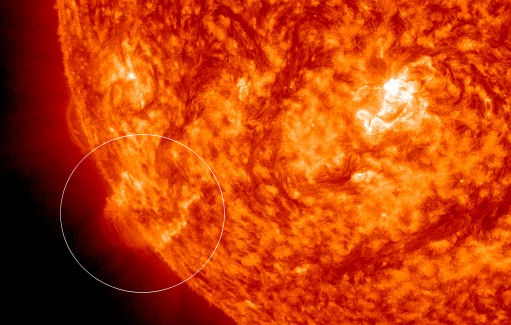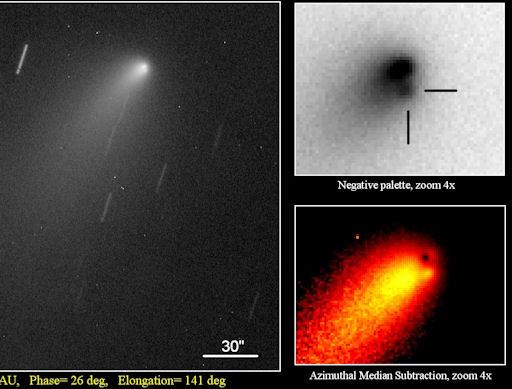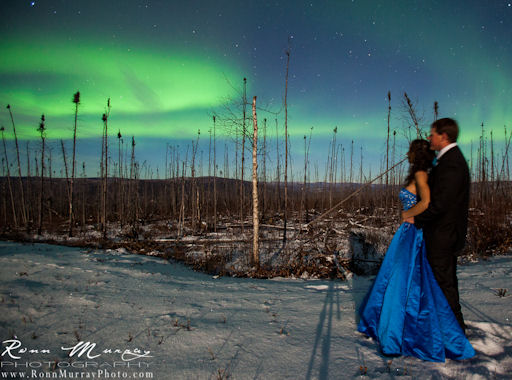Hang the Transit of Venus on your wall! Hubble-quality images from NASA's Solar Dynamics Observatory are now available as metallic posters in the Space Weather Store. | | |
MOSTLY QUIET WITH A CHANCE OF FLARES: Solar activity is low. With no sunspots actively flaring, the sun's x-ray output has nearly flatlined--for now. Strong flares are still a possibility. Sunspot AR1598 has a delta-class magnetic field that harbors energy for M-class eruptions. Solar flare alerts: text, voice.
CANYON OF FIRE: A filament of magnetism snaking around the sun's southeastern limb erupted on Oct 26th. The blast created a "canyon of fire" in the sun's lower atmosphere. Click on the circle to animate the event:

The glowing walls of the canyon are formed in a process closely related to that of arcade loops, which appear after many solar flares. Stretching more than 250,000 km from end to end, the "canyon" traces the original channel where the filament was suspended by magnetic forces above the stellar surface.
As erupting magnetic filaments often do, this one launched a coronal mass ejection (CME) into space. The Solar and Heliospheric Observary recorded the expanding cloud: movie. The CME does not appear to be heading for Earth or any other planet.
Realtime Space Weather Photo Gallery
A COMET IN TROUBLE? Amateur astronomers have been keeping a close eye on Comet 168P/Hergenrother since October 1st when it suddenly brightened 500-fold, from 15th to 8th magnitude. At the time, the comet was making its closest approach to the sun (1.4 AU). Some observers speculated that solar heating caused the fragile comet to break apart. On Oct. 26th, a group of astronomers found evidence to support this idea. "Using the Faulkes North (F65) telescope," writes Ernesto Guido et al., "we detected a fragmentation in Comet 168P."

"Our images, taken on Oct. 26th, reveal the presence of a secondary nucleus, or fragment, about two arcseconds away from the main central condensation of comet 168P." This is probably a chunk of rocky ice emerging from the haze of gas and dust that surrounds the main nucleus, still hidden inside. Comets are notoriously fragile, so its no surprise that Comet 168P/Hergenrother is breaking apart in this way.
The only question is, what happens next? Will the comet spit in two, with two heads and two tails, one tracking the fragment and the other tracking the parent? Or is this the prelude to a more complete disintegration? Amateur astronomers are encouraged to monitor developments while the comet remains bright enough to see through backyard telescopes. Here are the comet's coordinates. For best results, we recommend the Comet Hunter Telescope.
Realtime Comet Photo Gallery
BRIDE, GROOM, AURORAS: Space weather can have a big influence on human affairs--and we're not just talking about radio blackouts and power outages. On Oct. 25th, photographers Ronn Murray and Marketa Stanczykova were married under the Northern Lights in Alaska, and according to the groom, it was space weather that brought them together:
"Marketa Stanczykova and I met after a she looked me up from Iceland when she found this image on the cover of spaceweather.com 1 year and 21 days ago," explains Ronn. "We became friends on Facebook and after shooting auroras together in Alaska we fell in love. So, we gathered a small group of friends and headed up to the University of Alaska's Poker Flat Research Range where the aurora is studied. Last night we said 'I do' in front of the AuroraCam for all the world to see." (continued below)

"This is a self portrait of the aurora and wedding photographers celebrating their own love under the magnificent lights."
"The sky was dark and aurora activity was non existent until we pulled up to the observatory," he adds. "As if by magic, the sky came alive and we were able to say our vows with a select group of incredible friends, the amazing aurora that brought us together, and the Aurora Cam as our witnesses. It was a day none of us will forget!"
Realtime Aurora Photo Gallery
Realtime Noctilucent Cloud Photo Gallery
[previous years: 2003, 2004, 2005, 2006, 2007, 2008, 2009, 2011]

